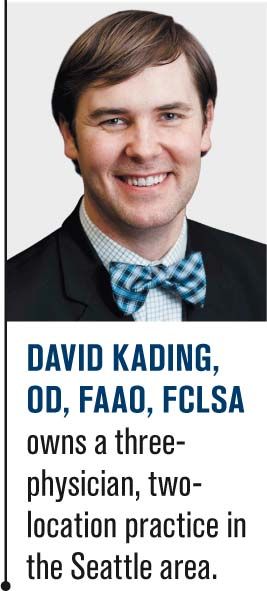When cost dictates treatment, the patient loses
I think that most of us would agree that new technologies generally mean better patient outcomes. But those outcomes always come with an added cost.

The views expressed here belong to the author. They do not necessarily represent the views of Optometry Times or UBM Medica.
I think that most of us would agree that new technologies generally mean better patient outcomes. But those outcomes always come with an added cost. For instance, we need to bring the technology into our offices and find a place for it, need to find a way to incorporate it into our exam or treatment sequence, and need to find a way to pay for the technology (either through charging patients or their insurance).
Related: The pros and cons of the latest dry eye technology
The advantages of LipiFlow
In the last five years, one such technology has been a preventative technology for many. I have never met a practitioner who does not think that dry eye is a problem. In a paper by Lemp,1 he reported that 86 percent of all dry eye patients have meibomian gland dysfunction (MGD) as either their hallmark of dry eye (50 percent) or as a combination with aqueous deficiency (36 percent). As such, through the efforts of Don Korb, OD, FAAO, Caroline Blackie, OD, PhD, FAAO, and others, we discovered thermal heat and pulsation (Lipiflow, TearScience) to be an effective method at getting glands to flow better.
Anyone who has utilized Lipiflow has seen how effective it can be. Researchers have shown improvement that lasts between 18 months and three years. I don’t know that we have fully seen the impact that this can have on our patients’ long-term outcomes yet.
Next: TearScience announces new pricing
TearScience announces new pricing
However, this has been a technology that was outside the reach for most, until now. What used to be a $100,000 product has significantly decreased in price to be $65,900 for both LipiFlow and LipiView II. The treatment arm, LipiFlow, can be broken up from LipiView II, which now has dynamic meibomian imaging (DMI), to be purchased independently. Now the prices are $25,000 for LipiFlow and $40,000 for LipiView II.
Related: A stepwise approach to diagnosing MGD
This 35 percent reduction in price is unheard of in a company of this size. Why would the company do something like this? When new TearScience CEO Joe Boorady, OD, (yes, that is “OD,” as in optometrist) came into the company, he realized that for the company to be successful, he had to find a way to decrease the price so that more practitioners and patients could get on board.
However, his efforts went to the next level. Previously, the activators cost around $350 per eye ($700 for bilateral treatment). When it cost a practitioner $700 to turn on his machine, the cost to patients had to be high. Through Herculean efforts, Dr. Boorady and his team have brought the price down 50 percent. Now what used to cost me $700 to treat a patient now costs $350.
Next: A message to industry partners
A message to industry partners
Obviously this post has centered on TearScience. I have had the pleasure of working with the company directly and have heard how difficult it is to bring about a change like this. Imagine in your practice, making a change overnight in the cost of your products and dropping everything nearly 50 percent. What TearScience is doing is making its technology and treatments much more accessible to patients, either through doctors paying less so that they can bring in the technology or doctors lowering their prices of what they charge patients. I commend Dr. Boorady and TearScience.
To our other industry partners, I ask: Is your technology cost prohibitive in a manner that TearScience’s used to be? If so, would you dare to help us in a way that we can better support our patients?
More from Dr. Kading: Tips for preventing the progression of myopia
Lastly, to my fellow optometrists: If you see a way to bring costly technology into your offices but are not willing to find a way to make it work because you haven’t found room for it in your office set up, have not found a way to incorporate it into your exam or treatment sequence, or you have not found a way to pay for the technology (either through charging the patient or their insurance), I urge you to reach out to the manufacturer to ask for the name of an optometrist who has the technology.
Obviously it has been done and can be done, and it is upon all of us to provide our patients with the best care possible. If a company can decrease its cost by 50 percent, surely we can tear down some of the barriers that we create about bringing new technology into our offices.
Dr. Kading has participated in an speaking, consulting, research, or advisory capacity for the following companies: Alcon, Allergan, Bausch + Lomb, CooperVision, Johnson & Johnson Vision Care, Oculus, Ocularis Pharma, RPS, Shire, TearScience, Valeant Pharmaceuticals, Valley Contax, Zeiss, and ZeaVision.
Click here to check out more Optometry Times blogs
References:
1. Lemp MA, Crews LA, Bron AJ, et al. Distribution of aqueous-deficient and evaporative dry eye in a clinic-based patient: a retrospective study. Cornea. 2012 May;31(5):472-8.
Newsletter
Want more insights like this? Subscribe to Optometry Times and get clinical pearls and practice tips delivered straight to your inbox.